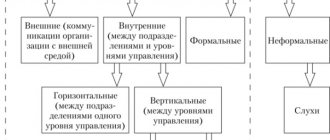Every person is a social being. We cannot live without communication. At birth, the child already finds himself in a social group consisting of medical staff and mother. Growing up, he communicates with family and friends, gradually acquiring all the necessary social skills. It is impossible to live a quality life without communication. But this is not as easy a process as it seems at first glance. Communication has a multi-level structure and features that must be taken into account when transmitting or receiving information.
Communication as a way to carry out life activities for a person
Well-known psychologists have determined that a person makes two types of contacts in his life:
- With nature.
- With people.
These contacts are called communication. There are many definitions for this concept. Communication is called:
- a special form of interaction between people and their interpersonal relationships;
- a friendly or business relationship between a person and another person;
- interaction of a group of people (starting from 2 people) for the exchange of information, knowledge of the surrounding world, which can be of an affective-evaluative nature;
- process of conversation, conversation, dialogue;
- mental contact between people, which manifests itself through a sense of community, performing joint actions, and exchanging information.
Video
Drill-driver DEKO GCD12DU3 Li-ion, 1x1.5Ah, Replaceable battery, 12 V, 32 Nm, 1 battery
1697 ₽ More details
Drill/driver DEKO DKCD16FU Li-ion in case + 63 accessories, 2x1.5Ah, Replaceable battery, 16 V, 32 Nm, 2 batteries
3168 ₽ More details
Nail design
How does communication differ from the concept of communication?
Communication covers all aspects of human contacts. These include contacts with nature, with neighbors, and at work. Communication is subject to certain requirements and rules. This concept presupposes specific goals for communication that at least one of the parties to the communication process has. Verbal communication (speech is its main means) is subject to strict rules, depending on its type. The communicator (a person who takes an active part in the communication process) has specific tasks that are designed to influence the other participant in the conversation. This process is more appropriate in business communication. That is why there is the concept of “verbal business communication,” which is applicable only in official communication and involves verbal exchange of information.
Two main types of communication
The process of exchanging information and influencing all participants in communication is divided into two large groups. All functions of communication must be carried out in these groups, otherwise it will not be productive.
Verbal communication involves the verbal transfer of information. In this process, someone speaks and someone listens.
Nonverbal communication occurs through the implementation of an optikokinetic system of signs. Gestures, facial expressions, pantomime are appropriate here, special attention is paid to tone and intonation, and eye contact occurs. This method of communication outwardly expresses the inner world of a person, his personal development.
The structure of speech (verbal) communication is:
- Meaning and meaning of words, phrases. An important role is played by the accuracy of the use of the word, its accessibility and expressiveness. Phrases must be constructed correctly and be intelligible to the listener. Sounds and words must be pronounced correctly; intonation should be expressive and correspond to the meaning of what was said.
- Speech sound phenomena: speech rate (fast, medium, slow); voice pitch modulation (smooth, sharp); voice tone (high, low); rhythm of speech (uniform, intermittent); voice timbre (rolling, hoarse, creaky); intonation, diction of speech. Observations show that the most attractive in communication is calm, smooth, even speech.
- Expressive voice qualities. These include characteristic specific sounds that arise during communication: laughter, chuckles, sighs, whispers, crying; separating sounds - coughing, sneezing; zero sounds - pauses; sounds of nasalization - “uh-uh”, “hmm-hmm”, etc.
However, words, sounds and intonations in a person’s daily communication account for (according to research) only 45%, and the remaining 55% comes from non-speech interaction.
Verbal communication - what is it?
We use verbal communication almost every minute of our interaction with people. We constantly exchange information, teach someone, listen to the flow of words ourselves, and so on. Verbal communication involves listening and speaking. In the process of such communication, its own structure is determined, and the following take part in it:
- "What?" - message.
- "Who?" - communicator.
- "How?" — specific transmission channels.
- "To whom?" - object of communication.
- "What effect?" - the influence of interlocutors on each other, who pursue certain goals for communication.
Language is considered the main means of human communication.
The purpose of language to be a mechanism of communication is called its communicative function. By interacting with each other, individuals transmit their own thoughts, worldviews, emotions and emotional disturbances, mutually influence each other in a certain direction, and achieve a common understanding. With the help of language, subjects of interpersonal interaction understand each other. It gives them the opportunity to establish collective work in all areas of human activity. Language is the force that determines the existence and development of individuals and society as a whole. And the communicative function is the leading social function of language. However, it is far from its only function. Its specialized functions include cognitive, expressive, nominative and accumulative.
The ability to express information, broadcast it and influence the interlocutor is called the expressive function of language. This function is considered as the unity of expression and transmission of data, feelings and emotional experiences, and the will of the speaker.
The cognitive function is interconnected with the presence of human consciousness in linguistic signs. Language is a unique instrument of consciousness that reflects the results of a person’s cognitive activity. Linguistic disputes about what comes first, mental activity or language, will probably never stop. The only correct judgment is the statement that language has an inextricable connection with thinking, since humanity not only expresses its own thoughts in words, but also thoughts are formulated in the form of words - a person thinks in words. The cognitive function of the psyche is intended to record the consequences of mental activity and apply them in communication. This function promotes knowledge of the world and its verbalization.
A person thinks using categories, and in the course of cognition, he discovers and names new phenomena and concepts for himself, which is the nominative function of language. It has a close connection with the cognitive, since everything known must necessarily have its own name. It also has a connection with the ability of linguistic signs to designate things. It is this ability that allows an individual to create a world of symbols. However, in the modern world there are many things that do not have names.
The accumulative function is closely related to the collection and storage of information. After all, it is no secret to anyone that language has existed much longer than people and people. A striking example of this is dead languages that outlive their speakers. Language, regardless of whether it exists today or not, preserves the memory of generations and the centuries-old history of mankind. After all, even with the loss of oral speech, it is possible to master ancient writings and draw certain conclusions about the past life of a nation.
Language can also be spoken and written. The leading form of a language is its sound component. Unwritten languages may also exist. When there is only written recording, and no voicing, then the language becomes dead.
Means of this type of communication
Verbal means of communication include speech, language, and words. Language, as a way for people to communicate and transmit information, appeared a very long time ago. It is a communication tool. A word in a language is a symbolic symbol that can have several meanings at the same time. Verbal communication cannot do without speech, which can be oral and written, internal and external, and so on. It should be noted that inner speech is not a means of transmitting information. She is not accessible to the people around her. Therefore, verbal speech communication does not include it in its system of means.
Speech helps a person encode certain information and transmit it to the interlocutor. It is through it that the informant influences his interlocutor, instilling in him his point of view. While the interlocutor can perceive it in his own way. This is where the basic functions and verbal means of communication begin to work.
We learn from children - and not a single liar can be such in front of us
Therefore, we need to learn from children.
Moreover, to develop the ability to recognize lies, the same exercises and games are used as for this age group. We also need to learn these poems that we didn’t like so much at school. They develop memory, which can help remember one person's nonverbal language when he is lying and do so more easily in the future.
This is a complex science - recognizing liars. But we need to use it if we want to be great bosses, parents, spouses, and even children.
Semichaevskaya Maria · 11 Jul, 2018
Her forms
Forms of verbal communication include oral and written speech, as well as such forms of interaction as monologue and dialogue. Depending on the development of events, oral speech may acquire the characteristics of a dialogue or monologue.
Forms of verbal communication include different types of dialogues:
- factual - exchange of information with the recipient for only one purpose - to support the conversation, sometimes this is perceived as a ritual (for example, when the question “how are you” does not involve listening to the answer);
- informational - an active process of information exchange, speech or discussion of any important topic;
- discussion - occurs when there is a contradiction in two or more points of view on the same problem, the purpose of such dialogue is to influence people to change their behavior;
- Confessional is a confidential type of dialogue that involves the expression of deep feelings and experiences.
Monologues in everyday life are not as common as dialogues. Verbal and nonverbal communication can be present in a monologue, when during a report or lecture a person not only provides information, but also accompanies it with facial expressions, gestures, a raised tone and changing intonation. In this case, both words and gestures become a specific code for the transmitted message. To effectively perceive these codes, it is necessary to understand them (it is difficult for a Russian person to understand a Chinese person, just as certain gestures are incomprehensible to the average person).
Facial expressions in animals and primitive people
It should be noted that not only humans, but also higher animals have facial expressions as non-verbal communicative behavior. Although the grimaces of apes are similar to those of humans, they often express different meanings. In particular, grinning, which humans might mistake for a smile, conveys threat in monkeys. The animal raises its gums to show off its fangs. Many mammals (wolves, tigers, dogs, etc.) do the same.
By the way, this sign of threat, apparently, was once characteristic of humans. This confirms that a grin among a number of primitive peoples is not only a smile, but also a sign of bitterness or threat. For these peoples, fangs subconsciously still serve as military weapons. By the way, in modern culture, the memory of this meaning of such a grimace has been preserved: there is a phraseological unit “show teeth”, the meaning of which is “to demonstrate a threat or resistance.”
Types of Verbal Communication
Speech communication has its own types. We have already listed the main ones - speech in all its manifestations, dialogue, monologue. The peculiarities of verbal communication are that it also includes private types of communication.
- A conversation is a verbal exchange of opinions, thoughts, and knowledge. This process can involve two or more people who communicate in a relaxed atmosphere. Conversation is used when an issue is highlighted or an issue is clarified.
- An interview is a little different from a conversation in that it is formal. The topics of the interviews are narrow professional, scientific or social issues.
- Dispute is a dispute on scientific or any socially important topics. This type is also included in the concept of “verbal communication”. Communication within the framework of a dispute between people is limited.
- The discussion, in turn, is also public, but the result is important in it. Here different opinions on a specific issue are discussed, different points of view and positions are presented. As a result, everyone comes to the same opinion and solution to the controversial issue.
- A dispute is a confrontation of opinions, a kind of verbal struggle in order to defend one’s opinion.
By what means did they communicate?
The German used words, and the Hungarian used gestures and body movements. Both one means of communication and the second occupy a lot of space in our lives.
What means of communication do people prefer? There is a Scandinavian saga about communication, which was retold by academician A.A. Beletsky. It tells how one day a dispute took place between a sage theologian and a Viking eye. The theologian showed one finger, to which the one-eyed Viking responded. showing two fingers.
The theologian showed three fingers, after which the Viking showed his fist, then the theologian ate the cherry and spat out the pit. The Viking found a gooseberry in his pocket and ate it.
Here the theologian admitted defeat. “What were you arguing about?” — The jury members asked the theologian. “I showed one finger, indicating that there is only one God in the world. He objected with two fingers, besides God the Father, there is also God the Son. I then showed three fingers, meaning that to be precise, there is also the Holy Spirit. To this he showed his fist, answering that the Trinity is still one.
I felt that I could not defeat him in theology, and changed the topic of the debate.
After eating the cherry, I said that life is sweet. But even here he answered me very aptly: having eaten gooseberries, he confirmed that one must live even when life is sour, “What were you arguing about? “They asked the one-eyed Viking. “I didn’t even think of arguing with him on theological topics. This impudent person showed that I have one eye. I told him that my one eye is worth his two.
He continued: he and I together have three eyes. After that, I said that impudent people like him should be taught not with scientific disputes, but with the fist. So I ate gooseberries to show that his life after this would be sour.”
Features of speech communication processes
Processes of verbal communication may occur with certain difficulties. Since two or more people take part in such communication, with their own interpretation of the information, unforeseen tense moments may arise. Such moments are called communication barriers. Both verbal and nonverbal means of communication are subject to such barriers.
- Logical - a barrier at the level of logic of information perception. It occurs when people with different types and forms of thinking communicate. The acceptance and understanding of the information provided to him depends on a person’s intelligence.
- Stylistic - occurs when the order of the information provided is violated and its form and content do not correspond. If a person starts the news from the end, the interlocutor will have a misunderstanding of the purpose of its presentation. The message has its own structure: first the interlocutor’s attention arises, then his interest, from there comes a transition to the main points and questions, and only then a conclusion from everything said appears.
- Semantic - such a barrier appears when people from different cultures communicate, there is a discrepancy between the meanings of the words used and the meaning of the message.
- Phonetic - this barrier arises due to peculiarities of the informant’s speech: unclear speaking, quiet intonation, shift in logical stress.
Rules for Effective Communication Proposed by Keith Davis
Professor Keith Davis has outlined the following 10 rules for effective listening.
- It's impossible to take in information when you're talking, so stop talking.
- Help your interlocutor relax. It is necessary to make a person feel freedom, that is, to create a relaxed atmosphere.
- The speaker should show your willingness to listen. You should act and look interested. When listening to another, try to understand him, and not look for reasons for objections.
- Annoying moments must be eliminated. Avoid tapping on the table, drawing, or shuffling papers while communicating. Perhaps information will be perceived better with the door closed?
- The speaker should empathize. To do this, try to imagine yourself in his place.
- Be patient. Don't interrupt your interlocutor, don't waste time.
- Keep your temper. If a person is angry, he gives the wrong meaning to his words.
- Avoid criticism and controversy. This puts the person speaking on the defensive. He may also become angry or silent. No need to argue. In fact, you will lose if you win the argument.
- Ask your interlocutor questions. This will encourage him and show him that he is being listened to.
- And finally, stop talking. This advice comes first and last, since all the others depend on it.
In addition to the ability to effectively listen to your interlocutor, there are other ways to improve the art of communication. Before communicating ideas, you need to clarify them, that is, you should systematically analyze and think about the issues, ideas or problems you plan to communicate to another. If you want to achieve success in your career or personal life, it is very important to take into account the various features of interpersonal interaction. Researchers say that, along with verbal (verbal) communication, it is necessary to take into account the non-verbal language that people use.
Means of nonverbal communication
Nonverbal communication is an external form of manifestation of a person’s inner world. Verbal and nonverbal means of communication are correlated in one message to varying degrees. They can complement each other, accompany, contradict or replace. It has been proven that the transfer of information is carried out using words only 7%, sounds occupy 38%, and non-verbal means occupy 55%. We see that nonverbal communication occupies a very important place in people's communication.
The main means of communication without words are gestures, facial expressions, pantomime, eye contact systems, as well as a certain intonation and tone of voice. The main means of nonverbal communication also include human postures. For those who know how to interpret them, postures can say a lot about a person’s emotional state.
What is nonverbal communication
Under non-verbal communication
means such means of communication as facial expressions, gestures, postures, touches, intonations, changes in the circumstances of communication - that is, those that are carried out without the use of words. The human body, which has a huge number of expressive capabilities, becomes the instrument of such communication.
At the same time, “non-verbal communication” often occurs unconsciously for one or all participants in communication. “Body language” is capable of revealing even what we would not like to discover in ourselves. And the reaction to a nonverbal message also often occurs unconsciously. Meanwhile, it makes sense to learn to recognize non-speech signals in order to make the communication process more effective.
Most often, both means of communication are used simultaneously. Many people tend to gesticulate when speaking, reinforcing their words with their hands and grimaces and clarifying their meaning. In some cultures, gesturing is considered bad manners, but even there it is not possible to completely get rid of this “bad habit”.
Features of nonverbal communication
In communication without words, everything is important: how a person holds his back (posture), at what distance he is, what gestures, facial expressions, postures, glances he has, and so on. There are certain areas of nonverbal communication that determine the effectiveness of communication.
- Public - more than 400 cm from the informant; such communication is often used in classrooms and during rallies.
- Social - 120-400 cm distance between people, for example, at official meetings, with people we don’t know well.
- Personal - 46-120 cm, conversation with friends, colleagues, there is visual contact.
- Intimate - 15-45 cm, communication with loved ones, you can speak quietly, tactile contact, trust. If this zone is forcibly violated, blood pressure may increase and the heart rate may increase. This phenomenon can be observed in a very full bus.
Verbal and nonverbal communication are processes that will help achieve effectiveness in negotiations if these zones are not violated.
Mastery of business communications, or Nonverbal and verbal signals in business communication
Human society cannot exist without communication. It is necessary: we live in a society and for this reason we come into contact with a huge number of people every day. Communication can be non-verbal and verbal. Nonverbal communication, better known in psychology as body language, contains those types of human self-expression that cannot rely on words. Correct interpretation of non-verbal signals is the key to forming and maintaining good relationships with colleagues and the ability to successfully resolve business issues. However, we should not forget that verbal communication is the main and most common means of communication. Why? Because it is based on speech, or the language of sounds, which is a universal means of communication.
Let's consider the main subsystems of nonverbal signals, learn how to interpret and apply them correctly to make business communications constructive.
Space and table positions
■ Spatial zones. Each person has a certain zonal space - an invisible shell that surrounds his body. The size of the zonal space easily changes under the influence of the situation and the person’s role in it.
There are four spatial zones:
- intimate (15–46 cm). A person allows only those closest to him into this zone - children, parents, spouses, close friends and relatives, as well as colleagues with whom he has worked for a very long time and trusts them completely;
- personal (46 cm–1.2 m). This distance usually separates acquaintances, colleagues of equal status, with whom a person has worked for a long time. It is also observed at official receptions and friendly parties;
- social (1.2–3.6 m). A person keeps this distance from strangers, new employees, colleagues who are senior in rank;
- public (more than 3.6 m). This zone is convenient for addressing a large group of people, used at meetings, lectures, seminars, etc.
In order for business communication to always be constructive, there is no need to violate the boundaries of the listed spatial zones. For example, intrusion into a person’s intimate area during business negotiations may be perceived by him as aggression, moral pressure, or even familiarity.
There are often cases when new employees at first feel a certain “coolness” of the team. In fact, colleagues just keep the newly hired employee at a distance because they don’t know enough. But over time, subject to positive emotional contacts, the territorial distance between colleagues decreases, moving into personal or intimate zones.
■ Positions at the table. The position of those talking at the table affects the nature of the conversation. In addition, if there is a large table in the office with several free chairs, each of us can independently regulate the outcome of the conversation.
Facial expression and facial expressions
Facial expression is the most important source of information about the interlocutor and his feelings. Facial expressions reflect a person’s emotional reactions to what is happening and serve as a means of regulating communication.
■ Smile. The most common manifestation of facial expressions – a smile – is mistakenly considered a 100% indicator of sympathy. A smile can only serve as a sign that your partner needs something from you and is trying to please you in this way.
It is important to note that the absence of a smile is by no means an indicator of antipathy - perhaps your interlocutor is hiding his emotions or is simply an unsmiling person himself.
■ Laughter. Laughter is another indicator of sympathy. Natural, pure laughter is always openness and sincerity. If a person laughs in your presence, it means that he is free and at ease, he can trust you. It’s not without reason that they say that a moderate amount of humor in negotiations never hurts. A witty joke easily relieves tension, helps to briefly distract, bring those laughing together, help them open up, and even win the favor of the audience.
■ Furrowed eyebrows can be classified as a reaction of disapproval or the interlocutor losing the thread of the conversation. To help your interlocutor, you should ask questions like: “What is your opinion on this matter?” or “Am I making my point clear?”
■ Clenched jaws indicate confidence and firmness, and often an aggressive attitude.
■ Open mouth. Delight, surprise or fear can cause the interlocutor to open his mouth, as if there is not enough room for emotions.
■ Tense nostrils and downturned corners of the lips indicate disapproval, as if it is difficult for a person to be next to you and breathe the same air.
■ Eyes. Eye contact is direct, immediate communication in its purest form.
Staring closely when communicating will not lead to anything good, but you should not constantly be distracted or look at other objects either. A person may think that you are not interested in him, that you are not at all inclined towards him, or that you feel uncomfortable. Ideal visual contact can be called an attentive gaze, from time to time transferred to other objects. In addition, for successful communication, the ratio of the planes must be such that the eyes are at the same level.
Closed poses. How to position to contact?
For constructive communication, you must correctly interpret closed postures, be able to react adequately, and, if possible, correct the situation.
Hiding behind a barrier is a natural human reaction to danger. In childhood, such barriers were pieces of furniture, a pillow with a blanket, and my mother’s skirt. In adulthood, this gesture underwent a change and turned into intertwining arms, legs, interlocking fingers, general muscle tension, etc.
■ Hands on chest pose. Hands folded on the chest indicate an attempt by the interlocutor to distance himself from an unfavorable situation. If a person crosses his arms in a conversation, you can conclude that he does not agree with you, even if in words he expresses agreement.
Remember two things: while the interlocutor keeps his hands crossed, he retains negative thoughts , in addition, his perception of information is reduced by up to 40% , which means that the time and energy spent on communication are wasted.
It is important not only to recognize the signal, but also to react to it correctly. You should not respond with words to nonverbal manifestations, for example, saying: “You crossed your arms. Did I do/say something wrong?” The person will have an unpleasant feeling that you are scanning him, doing psychotherapy without asking. Then he will completely shut down or respond with rudeness.
It is better to respond with the same non-verbal manifestations. Show something to your interlocutor, hand him a book, an information sheet, treat him to tea. He will be forced to open his arms, therefore taking a more open position. Alternatively, you can ask the interlocutor to lean forward to better look at your diagram, report point, etc.
■ Crossed legs pose. Just like crossed arms, crossed legs are an expression of a defensive attitude towards the situation, an agitated state, a defensive or restrained position. This gesture can often be seen in conjunction with other nonverbal manifestations of disagreement (crossed arms, furrowed eyebrows, downturned lips, narrow pupils). Separately, it can depend on many factors, for example, cool air in the room, an uncomfortable chair, the desire to “sit beautifully” (this is typical for women).
If you are sure that crossed legs are the result of disagreement with what was said, the interlocutor has isolated himself and does not heed your words, the course of action is the same. You need to find a way to change the opponent’s position - ask him to go to the map on the wall, evaluate the new renovation in the office opposite, etc.
■ Fingers locked. Clasped fingers express disappointment and hostility. If you watch this pose, you will see more than once that the fingers of the interlocutors are clasped so tightly that they even turn white from tension. Despite this, a person can remain friendly and smile.
There are three finger grip options:
- clasped fingers at face level (elbows on the table);
- fingers clasped on the table;
- clasped fingers on the knees (if the opponent is sitting), below in front of him (if standing).
It will be most difficult to come to an agreement with a person whose hands are raised to face level. To eliminate this closed gesture, you need to make the interlocutor unclasp his hands and stretch them forward, for example, ask him to pass something.
■ Head position. A straight head position indicates a person’s neutral attitude towards the issue under discussion. At the same time, the head is motionless, sometimes small nods are made. Such a person has not yet made a decision on this issue or has not received the required amount of information.
A tilt of the head to the side indicates a person's interest in the topic of conversation. This gesture is very ancient. Biologists believe that we inherited it along the evolutionary line from animals. If you notice that the listeners tilt their heads to the side and lean forward with their bodies, then you have achieved the audience's favor. If they are speaking to you, you should also bow your head and nod from time to time. Your interlocutor will be glad to show your participation.
If the interlocutor's head is tilted down, this indicates a negative or judgmental attitude of the person towards you or the topic of conversation. Critical assessment, ignoring what is said, as in the case of crossed arms and legs, will continue as long as the interlocutor uses a closed posture. Try changing it, for example, you can make it raise its head by showing something interesting.
Verbal cues
Let's look at a number of verbal cues needed for constructive communication.
■ Speech clarity. To be well understood, it is important to develop good diction. Since childhood, we are taught not to swallow words and pronounce sounds. If things are more or less okay with sounds in adulthood, then with clarity of speech the situation is worse. Unclear speech can be caused by anxiety, fear, or confused thoughts. We’ll talk about how to deal with this later.
■ Sincere, friendly intonation and a positive attitude create a favorable atmosphere for communication, and a smile is a good addition to it. However, a smile should always be sincere, since any artificiality is subtly perceived by the subconscious of the interlocutors, and a feeling of mistrust arises.
■ Voice volume should be medium. Let's imagine a conversation on the phone. You are discussing an important issue, and suddenly your hearing deteriorates. What do the interlocutors do in this case? They speak louder. This is wrong behavior because in business communication it can be perceived as aggression. You should say something like this: “It’s hard to hear you. May I call you back?" or “Please call me back.”
■ your voice tone at a low or medium level, since high tones are perceived by the subconscious as nervous and aggressive.
■ Speed of speech should be moderate. Speech that is too slow makes a person nervous, and speaking too quickly makes it difficult to follow the opponent’s train of thought.
If you are nervous, you can slow down your speech rate slightly. When you are nervous, you need to especially pay attention to the clarity and brevity of your words. For example, “I’m recording. Just a minute, I’ll look in the database.” If your interlocutor is nervous and provokes conflict, it is also necessary to reduce the rate of speech. To prevent a new outbreak of irritation, monitor the clarity and conciseness of your speech. Try to calm down and speak confidently. Sit upright, square your shoulders and straighten your back. An even posture helps you breathe easier, relieves anxiety and protects you from the emotions of your interlocutor.
■ Purity and content of speech. Watch your speech. Always try to use competent statements, exclude filler words and vernacular words, and monitor the clarity of expression of thoughts. Perhaps your loved ones understand you perfectly, but in the business world, with a huge number of contacts (and sometimes limited time), your colleagues will not speculate: “What did he mean when he talked about “not those, but other” papers? »
Oral communication requires spontaneity, and this often causes uncertainty, anxiety and fear in a person. It is useful to start working on oral speech by expanding your vocabulary. Remember, for example, Martin Eden, the hero of Jack London's novel: having decided to become a writer, he set himself the task of learning new words every day.
It is necessary to expand the vocabulary of both those who have little vocabulary and those whose profession requires it (managers, secretaries, lawyers, psychologists, media workers, etc.).
If you clearly understand what you want to tell others and have a large vocabulary, you will certainly convey the message to your listeners and easily prevent various kinds of misunderstandings and ambiguities. And employees whose thoughts and words are confused are at risk of getting into trouble every hour. Hence the omissions, confusion, inaccuracies, conflict situations, etc.
■ Ethics and compliments. Be as polite as possible. If in a conversation you pay attention to the qualities of your interlocutor or his actions (events), then praise him, but do it sincerely, without irony. An insincere compliment will be felt by our subconscious immediately.
Active listening
Eastern wisdom says: “The truth lies not in the mouth of the speaker, but in the mouth of the listener.”
Many people, when solving a particular issue, are so self-absorbed that they simply ignore the words of their interlocutor. We all have different types of thinking, so what is important to one may simply not be heard by another. Hence misunderstandings, lack of specifics in conversation, and ignoring of precious ideas.
Interlocutors generally prefer to listen only to themselves, and expect only a favorable perception from you. To win the sympathy of your interlocutor, you need to create the feeling that you are listening to him as carefully as possible. Every person needs to be listened to, because... it creates a feeling of self-worth. By becoming an active listener, you are giving your interlocutor a silent compliment. By listening to what he considers important, the awkwardness that often arises when strangers communicate quickly goes away.
Active listening techniques should be used if you:
- not sure that they understood the interlocutor correctly;
- receive an extremely important or emotional message.
Strive to concentrate attention on the expression of the interlocutor’s feelings and on the content of his speech. To become a good active listener, you need to constantly ask yourself questions: “How are they feeling? What does he want to tell me?
It is useful to use the following techniques in business communication:
- adjusting to the pace of speech of the interlocutor, using his words;
- questions during the interlocutor’s speech like: “If I understand correctly, do you want to purchase equipment from this company?”;
- reflection of feelings: “I see how important this is for you”, “I see how worried/excited you are”, “Yes, this is actually wonderful”;
- recognition of value: “I appreciate your desire to cooperate with us.”
■ "Bridges". With uncommunicative, shy people who like to answer in monosyllables, a conversation can be built on the basis of “bridges” that can help them speak further. Such “bridges” can be the questions “For example?”, “What did you do?”, “And?”. After pronouncing them, you need to remain silent, giving the initiative of the conversation to the hands of the interlocutor.
To use bridges correctly, you need to adhere to three rules:
1. Lean forward without crossing your arms.
2. Place emphasis on the last word “bridge”, focusing attention.
3. Lean back and allow your interlocutor to speak.
Leaning forward with your hands free kills two birds with one stone. Firstly, you show the interlocutor that you do not radiate aggressiveness, and secondly, you instill in him confidence that now it is his turn to carry on the conversation. The emphasis on the last word “bridge” makes the intonation sound like a question; if the intonation remains the same, all “bridges” turn into interrogation. After deflecting, place your hand on your chin, showing your interlocutor that you are ready to listen carefully.
Basic mistakes of active listening
Pencil
You should not listen to your interlocutor with a pencil or pen in your hands. The exception is those cases when you are expected to take notes (seminar, study, taking dictation from your supervisor). When you're meeting with partners, holding a pen or scribbling notes can interfere with the other person's train of thought. A person may think that you are impolite and distrustful and that you are opposed, writing down what he later does not want to admit. It is better to take notes after negotiations, when the interlocutor is not around.
Pretense
A person can speak approximately 125 words per minute and perceive 400 words. Remember how many times you had to nod affirmatively, pretend to listen attentively, but yourself think about your lunch break, buying new shoes, or the unkempt appearance of your neighbor across the street. And how often did your interlocutor bring you out of your oblivion with an unexpected question: “What do you say?” You are caught off guard and have to ask again. For the first time, your interlocutor may forgive this, but repeating the situation is no longer acceptable: the person may lose confidence in you or prefer another partner.
The danger of pretending is that you will likely miss important information that is needed to achieve certain goals. Therefore, try to fully concentrate on the speech of your opponent, and only then will your conversation bring the desired result.
Sign language
Gestures are usually called socially practiced movements that can convey a person’s emotional state. There are a very large number of gestures, and they are all classified according to the purpose of transmitting information by a person and his internal state. Gestures are:
- illustrators (complement the message);
- regulators (the person’s attitude is visible);
- emblems (common symbols);
- affectors (transmission of emotions);
- assessments;
- confidence;
- uncertainty;
- self-control;
- expectations;
- denial;
- location;
- dominance;
- insincerity;
- courtship.
By how a person behaves during a conversation, one can determine his internal state, how interested he is in the exchange of information, and whether there is sincerity.
A word about individuality and uniqueness
In fact, not all people will show all the signs described in this article when lying.
Some may exhibit “symptoms of untruth” while telling the truth. Each person is individual. Someone may even feel like a liar, even though they are telling the absolute truth. It happens that unfair accusations already confuse a person’s soul and he feels awkward.
We can say that the signs that will be described further are not indicators of lying. Rather, they are symptoms that demonstrate the uncertainty and anxiety that can often accompany lying. Therefore, these signs cannot be used by themselves.
All films like “The Theory of Lies” are nothing more than a fairy tale. And even there, the help of Laitman’s team was only one element of the investigation.
Believe me, people are very annoyed when the slightest nervous tic is pointed out to them and they are told that he is lying. Any microexpression can be provoked not by the fact that a person is lying, but by certain memories or emotions that are not connected due to the lie. You need to check the factual material. If a person is suspected of committing a crime, then checking for lies is good, but in addition to this, you need to collect facts.
People can also skillfully hide their non-verbalism and many simply know how to lie. In fact, you don't have to be 007 to have these skills. It's enough just to lie regularly. Then a person may not have anxiety, and even if he does, it can be hidden. Skilled liars are good actors, and in order to expose them, you need to use the same factual material.
Human facial expressions
Human facial expressions are also a way of informing. When the face is immobile, 10-15% of all information is lost. If a person is deceiving or hiding something, then his eyes meet the eyes of the interlocutor less than a third of the time of the entire conversation. The left side of a person's face is more likely to show emotions. Accurate messages about a person's condition are conveyed through the eyes or the curvature of the lips. This occurs due to the behavior of the pupils - their contraction and dilation is beyond our control. When we experience the emotions of fear or sympathy, the pupils characteristically change.
Signals sent by the eyes
Signals sent by the eyes also relate to facial expressions. Women are known to shoot their eyes when flirting. You can say “yes” by blinking your eyelashes. An open, direct look into the eyes of the interlocutor is considered a sign of a free and strong person. This view has its biological roots. Among primitive peoples, as well as in the animal world, it is often a challenge. Gorillas, for example, tolerate people near them, but a person should not look into the eyes of the leader, since the latter will regard this as an encroachment on his leadership in the herd. There are known cases when a cameraman was attacked by a male gorilla, because the animal thought that the flashing camera lens was a challenge, a direct look into the eyes. And today in human society such non-verbal behavior is considered courageous. It is known that when people are unsure of themselves, when they are timid, they look away.










